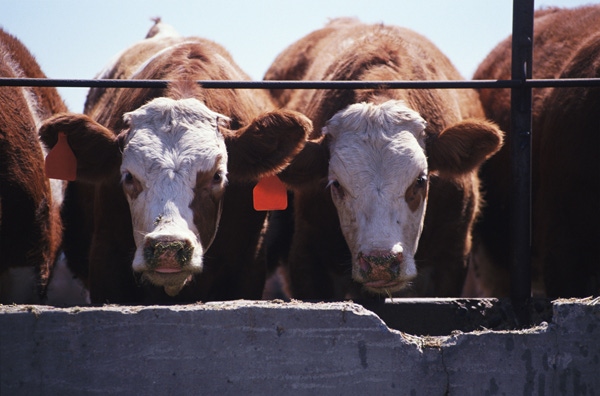November 15, 2011

Fueled by declining beef production due to the drought and booming exports, fed-cattle prices soared to "unprecedented" levels, according to a Texas AgriLife Extension Service expert.
Fed cattle prices were $127 per hundredweight last week, said Dr. David Anderson, AgriLife Extension livestock economist. In comparison, they were $113 per hundredweight two months ago.
"Fed-cattle prices" typically refers to the price of live cattle coming out of feedlots after being fattened on rations consisting largely of grain.
Last year at this time, the price per hundredweight was about $98, with an average of about $95 for 2010, Anderson said.
"The seasonal price pattern usually peaks in the springtime, but with another peak late in the year, and that's exactly the kind of seasonal pattern we've seen this year," Anderson said. "Prices were more than $120 for fed cattle in April, and now we’re back up over $120 again, after hitting a summertime low of about $104."
Though the seasonal ups-and-downs are to be expected, the prices are being driven to unprecedented levels by several factors, he said.
First, though the Texas corn crop was largely a failure due to the drought, the harvest was good in the Corn Belt, which cheapened feed. Another factor is increased demand in overseas markets.
But the big factor is the drought and the effect it had as livestock producers were forced to aggressively cull herds, send calves to market early or, in many cases, liquidate entire herds because of lack of grazing, hay or water – or a combination of all three, he said.
"Earlier in the year, as we really pushed large numbers of cattle through as the drought got worse and worse, we forced a lot of calves to market early, and we did see price declines across the board," Anderson said.
This means the calves that normally would have been held and sold in Texas and Oklahoma this fall are already long gone because they were moved out earlier in the summer, which makes supplies weak and drives prices up, he said.
"If you had to sell a few months ago, that's not much consolation, but I think it is a positive thing overall," Anderson said.
More information on the current Texas drought and wildfire alerts can be found on the AgriLife Extension Agricultural Drought Task Force website at http://agrilife.tamu.edu/drought/ .
You May Also Like




